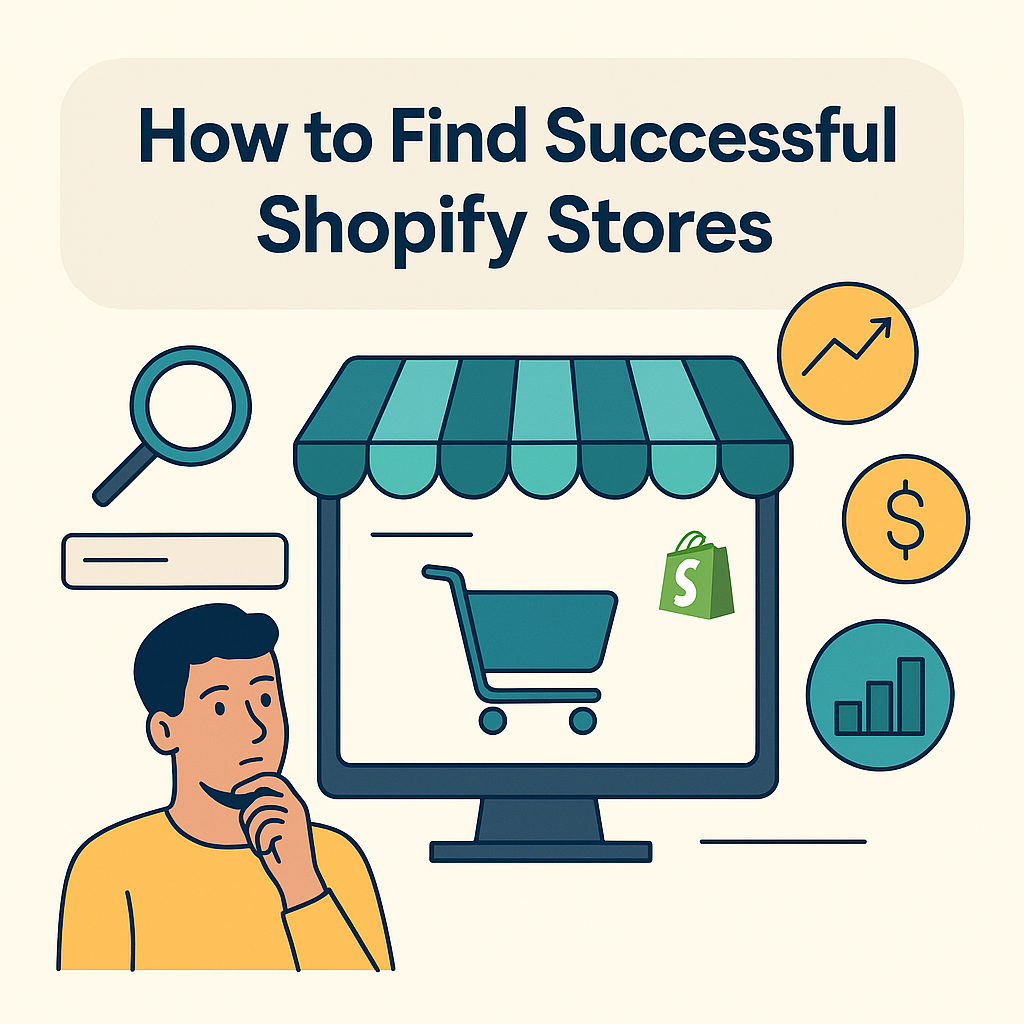If you’re serious about launching or scaling a Shopify store, you should know this: the best e-commerce operators are great students of what already works. Instead of reinventing the wheel, they spy on winning brands, borrow proven strategies, and apply fresh ideas to stand out. Here’s how you can do exactly that — step-by-step.
✅ 1. Use Shopify’s Own Resources
Shopify wants you to succeed — so they’ve documented plenty of real success stories. Start by browsing the Shopify Success Stories page. It’s packed with case studies of brands that started small and scaled to millions. Look at what they sell, who they sell to, and how they present their brand online.
You can also find archived listings from Shopify’s old Exchange Marketplace. Although it’s shut down, you can still uncover snapshots of real stores for sale — including revenue numbers, profit margins, and traffic stats. Just Google Shopify Exchange Marketplace archives or browse through SEO case studies that mention them.
✅ 2. Spy with Tools & Store Directories
There are entire tools dedicated to showing you what’s under the hood of successful Shopify stores. Use sites like BuiltWith.com, Wappalyzer, or myip.ms to search for sites that share Shopify’s IP address. For example, Shopify’s common IP block is 23.227.38.* — plug that into myip.ms and you’ll find thousands of live stores.
Once you have a list, dig deeper with Chrome extensions like Koala Inspector, Commerce Inspector, or SimilarWeb. These show you what apps a store uses, how much traffic they get, which products are bestsellers, and what ads they run.
For even more ideas, check out winning product directories like Ecomhunt, Pexgle, or Dropispy. These show trending Shopify products alongside the stores selling them. It’s an easy way to spot new niches, angles, and product ideas.
✅ 3. Use Google Search Operators
Google is still your best friend when it comes to detective work. A clever trick is to use search operators to find stores that still use Shopify’s default domain structure: site:myshopify.com. Combine this with niche keywords. For example:
vbnetCopyEditsite:myshopify.com "organic skincare"
site:myshopify.com "dog accessories"
site:myshopify.com "fitness equipment"
This can reveal both large and small stores that are actively selling in your niche. Once you find a store, poke around: What does their product page look like? What bundles do they offer? What’s their refund policy? Take screenshots of ideas worth saving.
✅ 4. Reverse Engineer on Social Media
Social media is a goldmine for discovering successful Shopify brands. Some of the best Shopify stores have built massive communities on Instagram, TikTok, or Facebook. Look up niche hashtags to see which brands pop up again and again.
Then, use the Meta Ad Library to see the ads these stores are running. Brands that run ads consistently — and for long stretches of time — are usually profitable. Take note of their ad creatives, angles, copy, and the offers they use.
If you really want to go deep, check how they leverage influencers and user-generated content (UGC). Do they encourage customers to post unboxing videos or reviews? Do they repost customer photos? These small tactics add up to big trust signals that drive conversions.
✅ 5. Analyze What “Successful” Really Means
Finding a store is only step one. To see if it’s truly successful, ask:
- How much traffic do they get? Tools like SimilarWeb or SEMrush can give you rough estimates.
- Do they have lots of real reviews on their product pages?
- How many SKUs are they selling? Are they focused or broad?
- Are they running paid ads? If so, on what channels?
- What’s their pricing strategy — do they rely on discounts, bundles, or subscriptions?
When you study a few brands in detail, patterns emerge. You’ll notice how top Shopify stores handle free shipping, customer support, returns, and trust signals like guarantees and badges.
✅ 6. Keep a Swipe File (And Use It Well)
The best marketers build swipe files — a private library of examples to inspire their own store. Create folders for:
- Product pages that convert well
- Upsell and cross-sell examples
- Email flows (like abandoned cart or post-purchase emails)
- Ad creatives and landing pages
- Copywriting hooks or headlines you love
This will save you time when designing your own product pages, writing ads, or planning a new offer.
✅ Example Shopify Stores to Inspire You
Here are a few real Shopify brands you can look up to see these tactics in action:
- Allbirds: Sustainable shoes, direct-to-consumer storytelling done right.
- Gymshark: Fitness apparel brand that exploded thanks to influencer marketing and community.
- ColourPop: Cosmetics brand known for rapid product drops and massive social buzz.
- Beardbrand: Men’s grooming products, great example of brand building and community.
- HiSmile: Teeth-whitening products that went viral with clever social media campaigns.
✅ Final Takeaway
Finding successful Shopify stores is more than just a spy mission — it’s about understanding what makes them tick and adapting those ideas for your own unique spin. Use Shopify’s resources, spy tools, Google tricks, and social media sleuthing to keep your finger on the pulse of what’s working right now.
The best brands never stop researching — they just execute faster. So keep building your swipe file, experiment boldly, and keep your store evolving.







